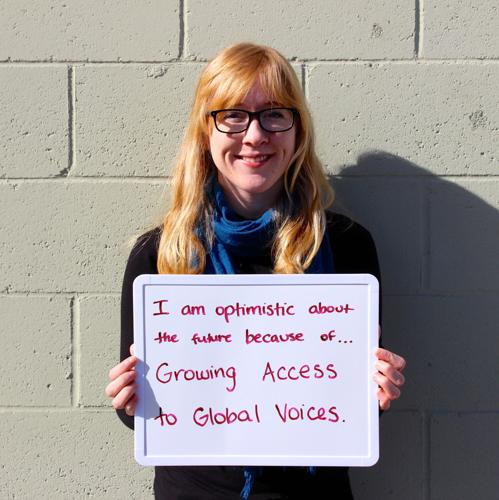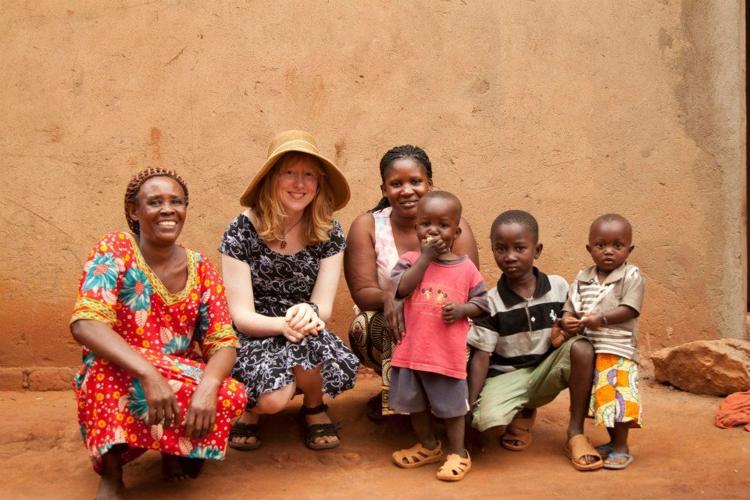It’s not uncommon to see a Tanzanian man herding cattle and jabbering into a cellphone, Katie McCracken says.
During her year of volunteering with the Peace Corps in the African country, McCracken, 24, learned that even if computer access does not exist, cellphones — and, increasingly, smartphones — are everywhere.
That observation, and several others, has influenced her lab work back at the University of Arizona in water resources engineering. McCracken will complete her two-year master’s program in agricultural and biosystems engineering in May. She plans to continue work in the field of water supply.
Her decision to go into the Peace Corps came in part from a desire to see for herself the needs that existed in the world. When she graduated from the UA in May 2013 with a degree in biosystems engineering, she had already spent several years in the lab where she still works. Conversations with her colleagues began turning toward using smartphone functions to test water quality or food samples.
“There was a lot of discussion in the lab that we want to do this because this will be great for people in the quote-unquote Third World,” McCracken says. “Everyone has an idea of what people need elsewhere, but until you get to know somebody or go to see some place, you don’t really know their situations.”
She had an older friend who had traveled with the Peace Corps, and in Tucson, McCracken had volunteered with refugee families from Iraq and Somalia.
She wanted to see the world, and so to Tanzania she went.
She learned Swahili and taught high school math and physics in English.
“Whenever you’re working abroad or doing aid work, sometimes there’s a feeling that, ‘I’m going to do something for these people that they need, and it’s going to be great for them,’” McCracken says. “But it’s more about building capacity ... and asking them, ‘Hey, what do you want to do?’”
In her village in central Tanzania, McCracken’s focus shifted from water quality to water supply.
There was only enough fuel to pump water from the village’s single well once a day.
To purify the water, she learned to strain it through a cloth and then place it on a tin roof to be treated by the sun’s heat and ultraviolet rays. That method saved fuel.
Early in her Peace Corps training, volunteers made water filters out of ceramic buckets. McCracken left hers with a family. On a visit several months later, she found the filter dismantled and the buckets repurposed. It must have broken, she says.
“Coming back made me realize that things need to be more robust than we make them in the lab,” she says. “There’s not an Apple store in Tanzania.
“If something breaks, there’s not always someone there to fix it.”
Her lab work back at the UA is about enabling an average person to test water quality with a smartphone and a test strip.
McCracken is working with the UA Zuckerman College of Public Health and Tucson Water to test BPA (bisphenol A) in water samples. BPA is an organic material used in some plastics.
McCracken likens the procedure to taking a picture of a pregnancy test.
A strip of paper would be loaded with a reagent that would react with a specific contaminant — in this case, BPA. The reaction could cause a change in color or light quality on the strip. An app could then process a smartphone photo of the strip using a mathematical equation to provide additional information.
This technology could detect contaminants and pathogens in food or water samples, McCracken says.
“The end goal is being able to detect things that usually take a long time in the lab or require sensitive and expensive equipment, and bring those capabilities to the average person, so they can figure out what’s up with their own water,” McCracken says.
Although there are already kits on the market to test water quality, this method could detect bacteria or heavy metals, for example, accurately and inexpensively, says Jeong-Yeol Yoon, a UA professor of agricultural and biosystems engingeering and biomedical engineering and the director of McCracken’s lab.
In some of those kits, comparing color changes to a chart can be difficult or lack specificity.
And with the worldwide prevalence of cellphones and the ingenuity McCracken witnessed in Tanzania, a simpler test could work anywhere.
“I was all by myself in a village in the middle of Tanzania,” she says. “It definitely made me realize how much everyone everywhere has to offer. ... It also helped my perspective with technology, and helped me to see what actually might be useful.”





